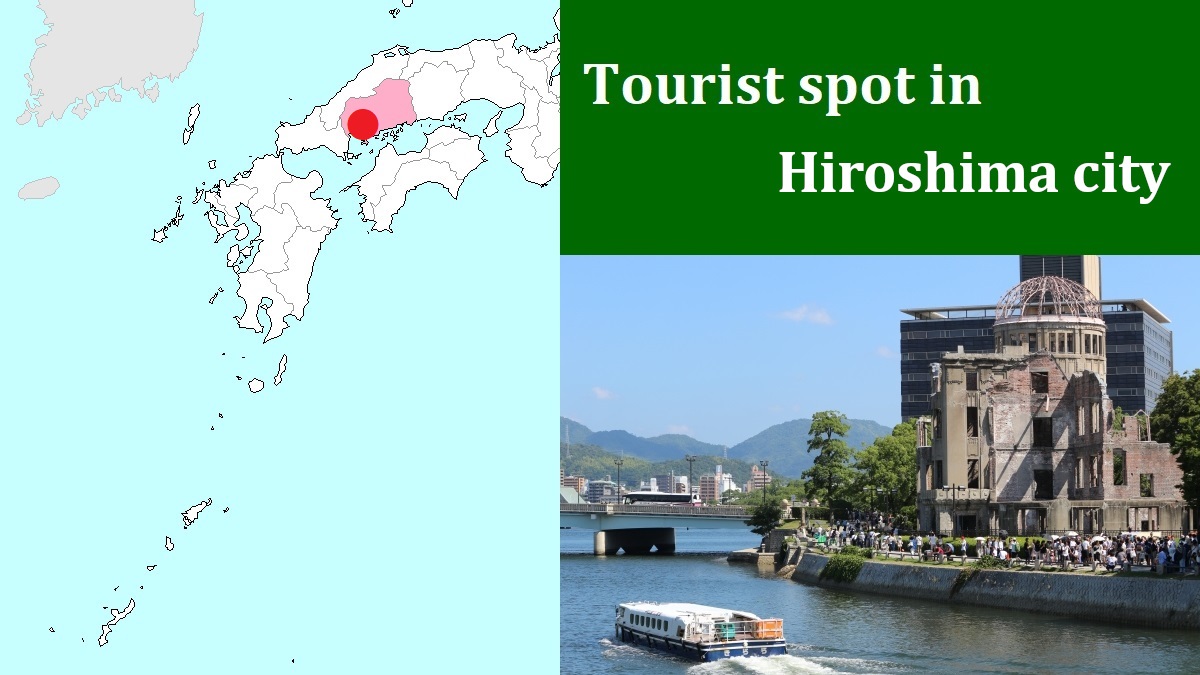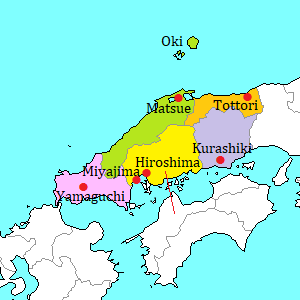Genbaku Dome (Atomic Bomb Dome) [原爆ドーム]
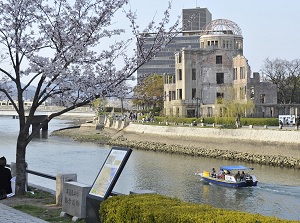
Motoyasu River & Genbaku Dome
Photo : Hiroshima Prefectural Tourism Federation
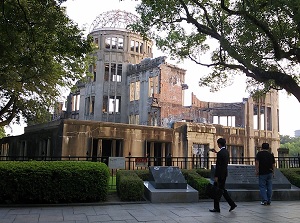
Genbaku Dome
Photo : Hiroshima Prefectural Tourism Federation
Genbaku Dome is the damaged building by atomic bomb.
"Genbaku" means "atomic bomb" in Japanese.
It is also named as Hiroshima Peace Memorial.
It is the monument to pass on the horror and misery caused by the nuclear weapon used in Hiroshima for the first time in human history.
It is located in the central part of Hiroshima city, and is about 2.5 km west of JR Hiroshima station.
It is on the riverside of Motoyasu River.
In 1915, the Western-style building named Hiroshima Prefectural Commercial Exhibition was completed.
The building was originally designed by Czech architect Jan Letzel.
In 1933, the name of the building was changed to Hiroshima Prefectural Industrial Promotion Hall.
The Pacific War (World War II) between Japan and the United States was started in 1941.
But, in 1945, Japan had been going to lose clearly, because many cities in the mainland of Japan had already been attacked by U.S. air raids since June in 1944.
On July 26, the Allies issued the Potsdam Declaration to call for Japan's unconditional surrender.
But Japan government passed it with silence.
The United States decided to use atomic bomb on August 2.
There has been various speculation why they had to drop the A-bomb at this time, but we cannot know it.
On August 6, Enola Gay (the B-29 bomber) by United States Army Air Forces flew out of Tinian Island at 1:45 am.
It dropped an atomic bomb at 8:15 am, first in the history of humankind.
The bomb exploded at about 150 meters east of this building and at an altitude of 580 meters.
The blast had a temperature over 3,000 degrees and the speed was over 440 meters per second.
(The wind speed of typhoon is dozens meters per second. Sound speed is about 350 meters per second.)
This building was destroyed within a second, but only the central part remained.
Hiroshima city had fallen into ruin in a moment, and tens thousand people were killed by only this explosion.
Only the remain of this building was in the ruin of the city.
Three days later, the second A-bomb was dropped in Nagasaki city.
The war ended on August 15, nine days after the dropping of A-bomb.
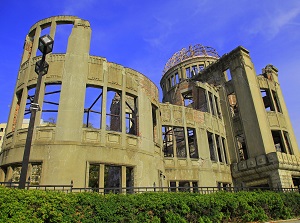
Genbaku Dome
Photo : Hiroshima Prefectural Tourism Federation
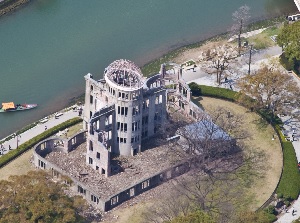
Site of Genbaku Dome
Photo : Hiroshima Prefectural Tourism Federation
The citizens of Hiroshima began reconstruction of the city.
And, Hiroshima city determined to become the city to aspire to world peace.
In 1954, Hiroshima Peace Memorial Park was completed near Genbaku Dome.
However, in the 1960s, some citizens said this building should be demolished because it brought back bitter memories of the atomic bombing.
Additionally, Hiroshima city had been reluctant to preserve the building because it costs a lot of money to preserve.
But a girl who died of atomic bomb disease in 1960 had left the following words in her diary.
"Only the miserable building will tell the horror of A-bomb to future generation for eternity."
The people who were impressed to read the diary organized the activity to preserve the building.
At last, the city council decided to preserve Genbaku Dome eternally in 1966.
In 1996, it became a UNESCO World Heritage site, despite the opposition of United States and the abstention of China.
Genbaku Dome is still appealing for world peace in silence.
How to get here
By streetcar with route No. 2 or 6, about 20 minutes from Hiroshima station to Genbaku-Dome-mae stop.

